-
 Bitcoin
Bitcoin $105,128.3815
3.90% -
 Ethereum
Ethereum $2,416.0020
7.44% -
 Tether USDt
Tether USDt $1.0005
0.02% -
 XRP
XRP $2.1746
8.78% -
 BNB
BNB $639.2755
3.53% -
 Solana
Solana $144.4068
7.70% -
 USDC
USDC $1.0000
-0.01% -
 TRON
TRON $0.2729
1.26% -
 Dogecoin
Dogecoin $0.1628
6.63% -
 Cardano
Cardano $0.5826
7.56% -
 Hyperliquid
Hyperliquid $37.1757
6.20% -
 Sui
Sui $2.7783
11.64% -
 Bitcoin Cash
Bitcoin Cash $462.3940
2.42% -
 Chainlink
Chainlink $13.1350
11.22% -
 UNUS SED LEO
UNUS SED LEO $9.1304
0.83% -
 Stellar
Stellar $0.2476
8.34% -
 Avalanche
Avalanche $18.0617
6.94% -
 Toncoin
Toncoin $2.9043
3.64% -
 Shiba Inu
Shiba Inu $0.0...01161
7.29% -
 Hedera
Hedera $0.1515
11.26% -
 Litecoin
Litecoin $84.2187
3.78% -
 Monero
Monero $313.8446
4.70% -
 Ethena USDe
Ethena USDe $1.0006
0.03% -
 Polkadot
Polkadot $3.4344
6.81% -
 Dai
Dai $0.9999
0.00% -
 Bitget Token
Bitget Token $4.2647
5.88% -
 Uniswap
Uniswap $6.9164
11.66% -
 Pepe
Pepe $0.0...09897
10.79% -
 Pi
Pi $0.5326
6.57% -
 Aave
Aave $259.4000
13.30%
What are the confirmation conditions for the bottom island reversal? Are there many false signals?
The bottom island reversal is a rare candlestick pattern signaling a potential downtrend-to-uptrend shift, formed by a gap down followed by a gap up, indicating exhausted sellers and emerging buyer control.
Jun 24, 2025 at 04:56 pm
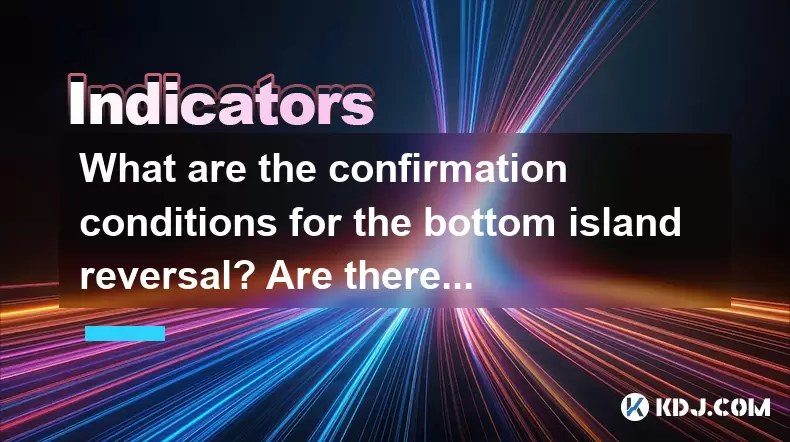
Understanding the Bottom Island Reversal Pattern
The bottom island reversal is a rare but significant candlestick pattern that indicates a potential shift from a downtrend to an uptrend. It typically forms when there's a gap down followed by a gap up, leaving a "blank" space on the chart — the island — which is isolated from the surrounding price action. This pattern suggests that selling pressure has been exhausted and buyers are starting to take control.
To identify this pattern correctly, traders must look for specific conditions:
- A clear downtrend preceding the formation.
- A gap down that creates a cluster of one or more candlesticks.
- Another gap up that separates these candlesticks from the subsequent upward movement.
- Volume should be relatively higher during the gap up, confirming the strength behind the reversal.
It’s important to note that while the bottom island reversal is considered a strong signal, it is not infallible. Traders should use additional tools such as volume analysis, moving averages, or oscillators to confirm the validity of the pattern before making trading decisions.
Key Confirmation Conditions for the Bottom Island Reversal
For the bottom island reversal to be considered valid, several key confirmation conditions must be met:
- Preceding Downtrend: The pattern must occur after a sustained downtrend. Without a prior downtrend, the reversal loses its context and significance.
- Gap Down Followed by Gap Up: There must be a noticeable gap down that forms the beginning of the island, followed by a gap up that separates the island from future price action.
- Isolated Price Action: The candles forming the island should be completely disconnected from the previous and next price movements due to the gaps.
- Increase in Volume During the Gap Up: A surge in volume during the gap up adds credibility to the reversal, indicating strong buying interest.
These conditions help filter out false setups and increase the probability of a successful trade. However, even with all these conditions in place, the pattern can still produce misleading signals, especially in choppy or low-volume markets.
Common Pitfalls and False Signals in Bottom Island Reversal Trading
One of the most debated aspects of the bottom island reversal is how often it produces false signals. While some technical analysts regard it as a powerful reversal indicator, others argue that its rarity makes it prone to misinterpretation.
False signals may arise under the following circumstances:
- When the pattern appears in a sideways or consolidating market rather than a confirmed downtrend.
- If the gap up lacks supporting volume, suggesting weak participation.
- In fast-moving or news-driven markets where gaps are filled quickly.
- When the pattern is too small or compressed to be meaningful.
Traders who rely solely on candlestick patterns without incorporating other forms of analysis may find themselves entering trades based on incomplete or misleading information. Therefore, combining the bottom island reversal with trendlines, support/resistance levels, or momentum indicators like RSI or MACD is highly recommended.
How to Trade the Bottom Island Reversal Safely
Trading the bottom island reversal requires careful planning and execution. Here’s how to approach it methodically:
- Identify the Pattern Clearly: Ensure the structure fits the textbook definition — gap down, isolated candles, gap up, and prior downtrend.
- Confirm with Volume: Look for increased volume during the gap up phase. This helps validate buyer enthusiasm.
- Use Entry Triggers: Enter the trade once the price breaks above the high of the island or after a retest of the gap-up level.
- Set Stop Loss Below the Island: Place a stop loss just below the lowest point of the island to limit downside risk.
- Establish Profit Targets: Use previous resistance levels or Fibonacci extensions to determine where to take profits.
By following these steps, traders can reduce exposure to false breakouts and enhance their risk-reward ratio. It’s also crucial to backtest this strategy on historical data to understand its effectiveness across different timeframes and assets.
Bottom Island Reversal vs Other Reversal Patterns
Compared to more common reversal patterns like the hammer, engulfing pattern, or morning star, the bottom island reversal is less frequently observed. However, its unique structure — with two distinct gaps — gives it a stronger visual signal when it does appear.
Unlike the hammer or morning star, which rely heavily on individual candle shapes and wicks, the bottom island reversal emphasizes the importance of price gaps. This makes it particularly useful in markets where gaps are more common, such as cryptocurrency markets that trade 24/7 but can experience sharp weekend or holiday gaps.
Despite its strengths, the bottom island reversal should not be used in isolation. Combining it with volume spikes or momentum divergence can significantly improve its reliability compared to simpler reversal patterns.
Frequently Asked Questions
Q: Can the bottom island reversal appear on any timeframe?
Yes, the bottom island reversal can appear on any timeframe, from 1-minute charts to weekly charts. However, its reliability increases on higher timeframes like the 4-hour or daily charts where price action tends to be more stable and meaningful.
Q: How do I differentiate between a true bottom island and a consolidation phase?
A true bottom island reversal will show clear gaps both before and after the island. Consolidation phases usually lack these gaps and instead exhibit overlapping price ranges without distinct separation.
Q: Is the bottom island reversal suitable for automated trading systems?
While possible, programming the bottom island reversal into an algorithm requires precise rules around gap sizes, volume thresholds, and trend definitions. Due to its subjective nature, it may require fine-tuning to avoid overfitting.
Q: Does the size of the island matter?
Yes, the bottom island reversal becomes more significant when the island contains multiple candlesticks and spans a larger price range. Smaller islands with only one or two tiny candles may carry less weight and be more prone to false signals.
Disclaimer:info@kdj.com
The information provided is not trading advice. kdj.com does not assume any responsibility for any investments made based on the information provided in this article. Cryptocurrencies are highly volatile and it is highly recommended that you invest with caution after thorough research!
If you believe that the content used on this website infringes your copyright, please contact us immediately (info@kdj.com) and we will delete it promptly.
- XRP Price Surge: Latest News and Analysis – Can XRP Reach New Heights?
- 2025-06-24 20:45:12
- Stablecoin Surge in South Korea: Kakao Pay's Venture and the Stock Rally
- 2025-06-24 20:25:13
- DOT Miners, Middle East, and Investors: Navigating Uncertainty
- 2025-06-24 20:25:13
- Mastercard, Fiserv, and Stablecoin Adoption: A New Era for Digital Payments?
- 2025-06-24 20:37:14
- Binance, TradFi, Strategy: Bridging the Gap in the New Era of Digital Finance
- 2025-06-24 20:37:14
- Little Pepe: The Next Ethereum 9000% Token Pump?
- 2025-06-24 18:45:12
Related knowledge

What does it mean when the stochastic indicator repeatedly fluctuates at the 50 horizontal line?
Jun 24,2025 at 09:08pm
Understanding the Stochastic Indicator in Cryptocurrency TradingThe stochastic indicator is a popular momentum oscillator used by traders to identify potential trend reversals and overbought or oversold conditions. In cryptocurrency trading, where price movements can be highly volatile, understanding how this tool behaves becomes crucial for making info...
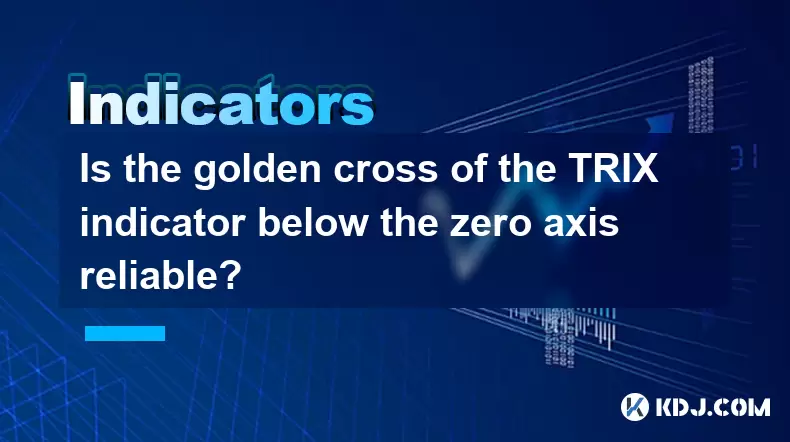
Is the golden cross of the TRIX indicator below the zero axis reliable?
Jun 24,2025 at 09:22pm
Understanding the TRIX Indicator and Its SignificanceThe TRIX (Triple Exponential Moving Average) indicator is a momentum oscillator used in technical analysis to identify oversold or overbought conditions, as well as potential trend reversals. It is calculated by smoothing price data three times using exponential moving averages and then taking the per...
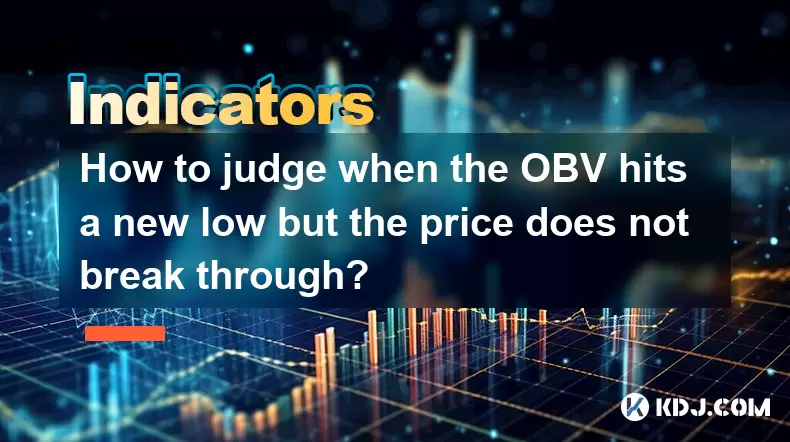
How to judge when the OBV hits a new low but the price does not break through?
Jun 24,2025 at 07:56pm
Understanding the Basics of OBV and Price ActionOn-Balance Volume (OBV) is a momentum indicator that uses volume flow to predict changes in stock or cryptocurrency prices. The core principle behind OBV is that volume often precedes price movement. When OBV hits a new low, but the price does not break through its previous support level, this can indicate...
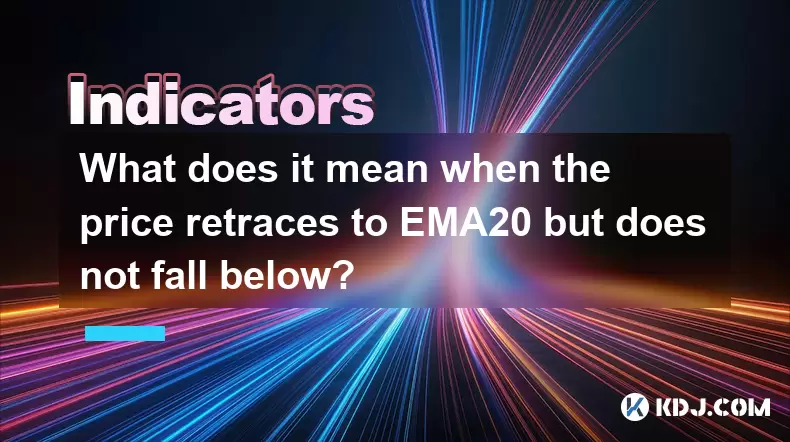
What does it mean when the price retraces to EMA20 but does not fall below?
Jun 24,2025 at 08:49pm
Understanding the EMA20 Indicator in Cryptocurrency TradingThe Exponential Moving Average (EMA) with a 20-period setting, commonly referred to as EMA20, is one of the most widely used technical indicators in cryptocurrency trading. It gives more weight to recent price data, making it more responsive to current price movements compared to simple moving a...
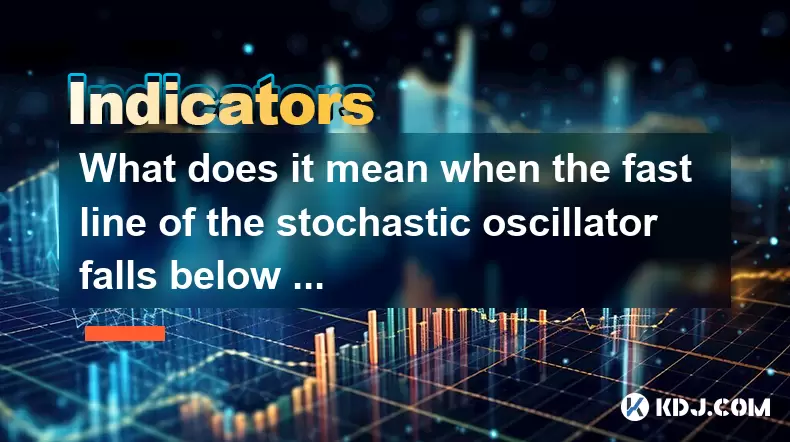
What does it mean when the fast line of the stochastic oscillator falls below the slow line?
Jun 24,2025 at 07:07pm
Understanding the Stochastic OscillatorThe stochastic oscillator is a momentum indicator used in technical analysis to assess overbought or oversold conditions in financial markets, including cryptocurrencies. It consists of two lines: the fast line (typically %K) and the slow line (typically %D). The fast line represents the current closing price relat...
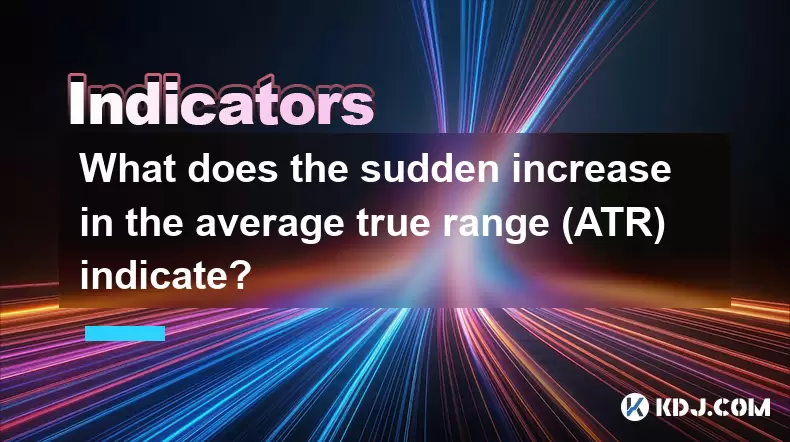
What does the sudden increase in the average true range (ATR) indicate?
Jun 24,2025 at 06:42pm
Understanding the Average True Range (ATR) in Cryptocurrency TradingThe Average True Range (ATR) is a technical indicator used by traders to measure market volatility. In the context of cryptocurrency, where prices can swing dramatically within short periods, ATR becomes an essential tool for assessing potential price movements. The ATR does not indicat...

What does it mean when the stochastic indicator repeatedly fluctuates at the 50 horizontal line?
Jun 24,2025 at 09:08pm
Understanding the Stochastic Indicator in Cryptocurrency TradingThe stochastic indicator is a popular momentum oscillator used by traders to identify potential trend reversals and overbought or oversold conditions. In cryptocurrency trading, where price movements can be highly volatile, understanding how this tool behaves becomes crucial for making info...

Is the golden cross of the TRIX indicator below the zero axis reliable?
Jun 24,2025 at 09:22pm
Understanding the TRIX Indicator and Its SignificanceThe TRIX (Triple Exponential Moving Average) indicator is a momentum oscillator used in technical analysis to identify oversold or overbought conditions, as well as potential trend reversals. It is calculated by smoothing price data three times using exponential moving averages and then taking the per...

How to judge when the OBV hits a new low but the price does not break through?
Jun 24,2025 at 07:56pm
Understanding the Basics of OBV and Price ActionOn-Balance Volume (OBV) is a momentum indicator that uses volume flow to predict changes in stock or cryptocurrency prices. The core principle behind OBV is that volume often precedes price movement. When OBV hits a new low, but the price does not break through its previous support level, this can indicate...

What does it mean when the price retraces to EMA20 but does not fall below?
Jun 24,2025 at 08:49pm
Understanding the EMA20 Indicator in Cryptocurrency TradingThe Exponential Moving Average (EMA) with a 20-period setting, commonly referred to as EMA20, is one of the most widely used technical indicators in cryptocurrency trading. It gives more weight to recent price data, making it more responsive to current price movements compared to simple moving a...

What does it mean when the fast line of the stochastic oscillator falls below the slow line?
Jun 24,2025 at 07:07pm
Understanding the Stochastic OscillatorThe stochastic oscillator is a momentum indicator used in technical analysis to assess overbought or oversold conditions in financial markets, including cryptocurrencies. It consists of two lines: the fast line (typically %K) and the slow line (typically %D). The fast line represents the current closing price relat...

What does the sudden increase in the average true range (ATR) indicate?
Jun 24,2025 at 06:42pm
Understanding the Average True Range (ATR) in Cryptocurrency TradingThe Average True Range (ATR) is a technical indicator used by traders to measure market volatility. In the context of cryptocurrency, where prices can swing dramatically within short periods, ATR becomes an essential tool for assessing potential price movements. The ATR does not indicat...
See all articles
























































































